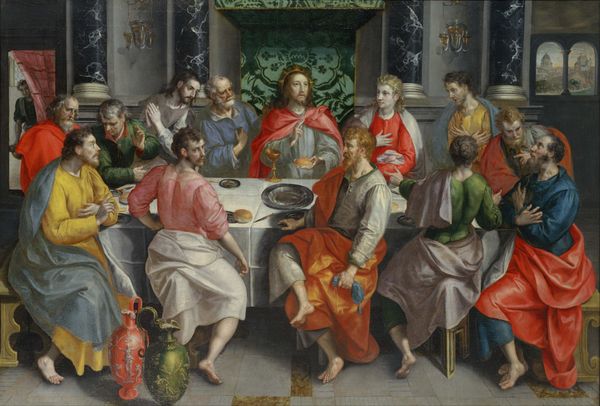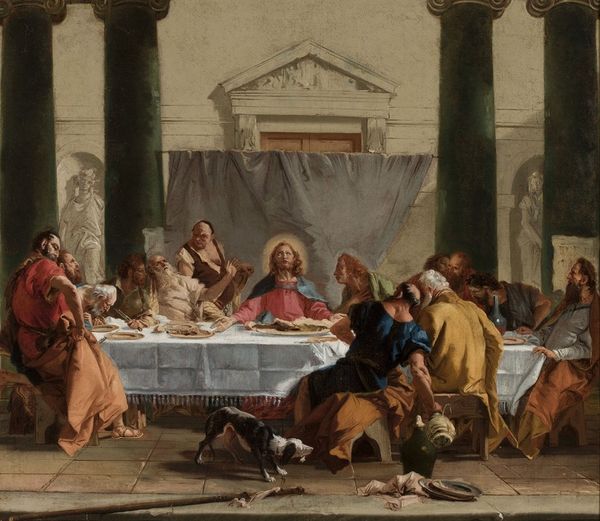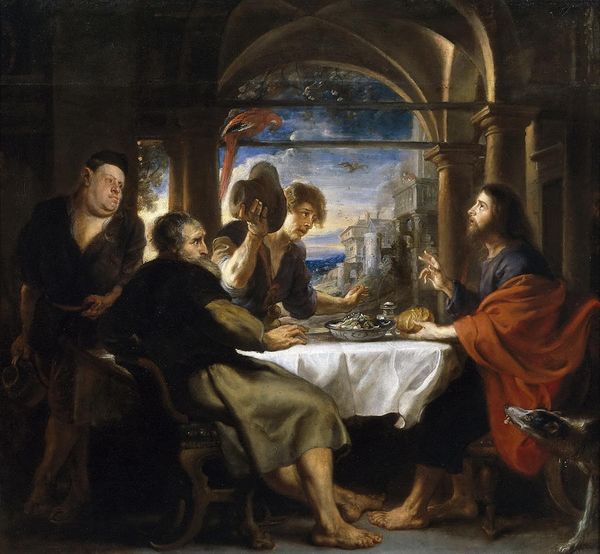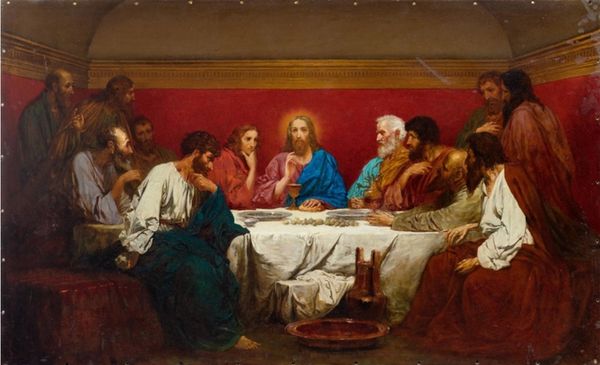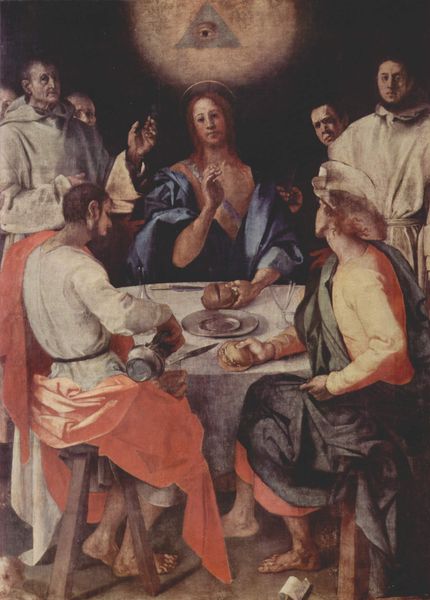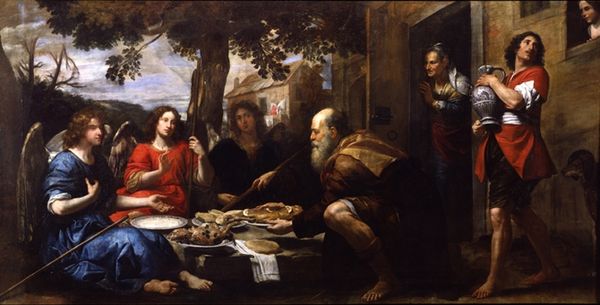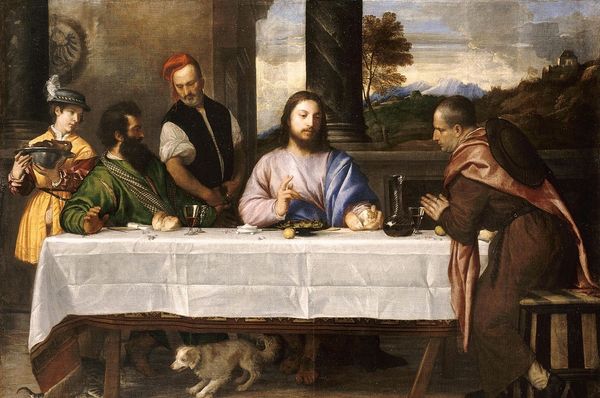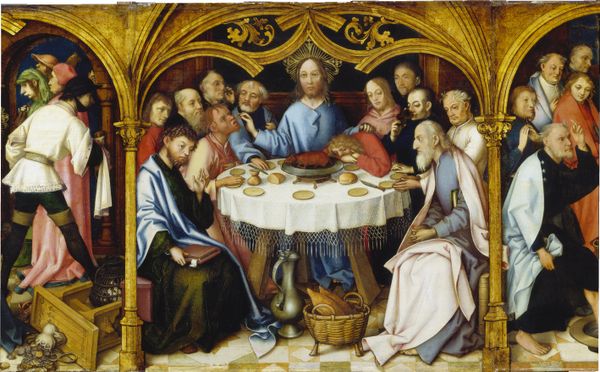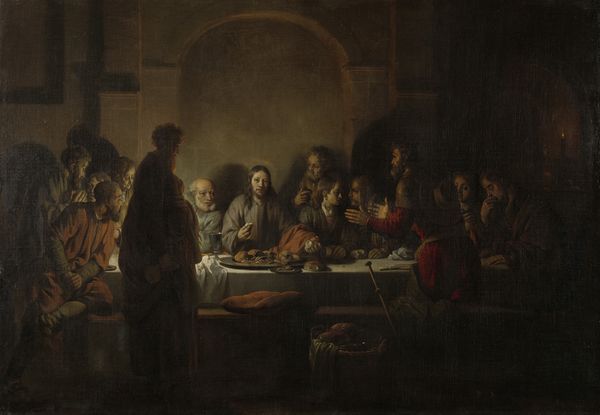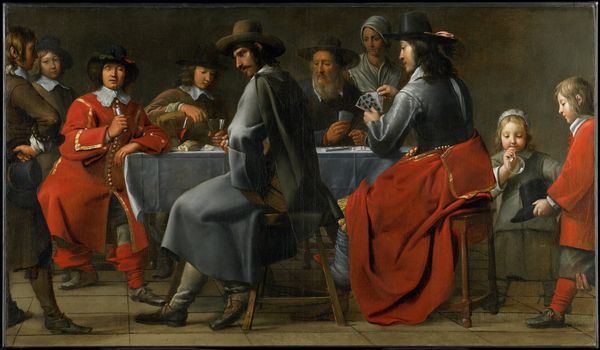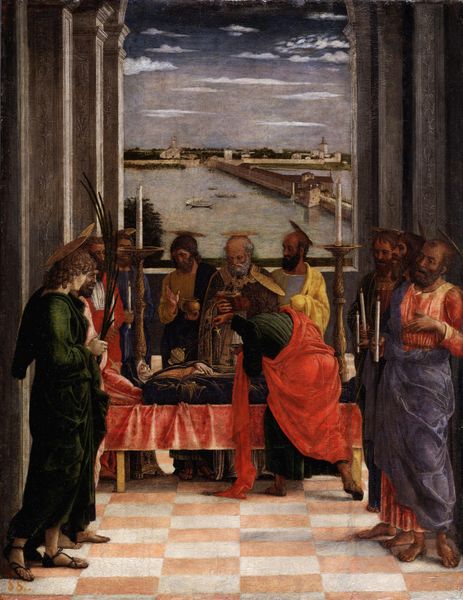
The Marriage Feast at Cana 1675
0:00
0:00
bartolomeestebanmurillo
Barber Institute of Fine Arts, Birmingham, UK
painting, oil-paint
#
narrative-art
#
baroque
#
painting
#
oil-paint
#
figuration
#
jesus-christ
#
christianity
#
history-painting
#
christ
Dimensions: 179 x 235 cm
Copyright: Public domain
Editor: Standing here, we are faced with Bartolomé Esteban Murillo's "The Marriage Feast at Cana," painted in 1675. It's quite a large oil painting. Initially, I am struck by how the composition seems divided – there’s a clear separation between the diners and the activity of filling the jars. How do you interpret this arrangement? Curator: That division, I find, is quite deliberate. Observe how the artist uses a contrast between the static arrangement of figures around the table and the dynamic actions of the servants. Murillo exploits the contrast between stasis and movement, directing the gaze and segmenting space. Further, the orthogonal lines converging toward a vanishing point beyond the table establish depth, while the limited color palette contributes to the visual coherence. What is the affect? Editor: It's subtle, but I see how those converging lines now focus my attention toward the background figures. The use of the limited color palette really adds to a dramatic touch overall. This brings up another question – what significance does the specific texture of the paint and canvas hold in conveying the intended theme? Curator: The smooth, almost porcelain-like finish of the figures, especially in their faces and clothing, suggests an idealization, contrasting the roughness in the depiction of utilitarian objects such as the water jugs, rendering a tactile sense of realism. That is achieved through differences in application. How do these contribute to our perception? Editor: I hadn’t considered the almost textural story the painting tells. The idealization alongside the realism really amplifies the distinction between the divine and the everyday within the painting's structure. Curator: Precisely, that juxtaposition directs one's understanding of its significance through material rendering. Editor: This deep dive has significantly altered how I see Murillo’s approach in merging both theological and observable aspects. Curator: Agreed, a keen attention to its intrinsic structure provides the means to understand how such elements inform meaning and perception.
Comments
No comments
Be the first to comment and join the conversation on the ultimate creative platform.
